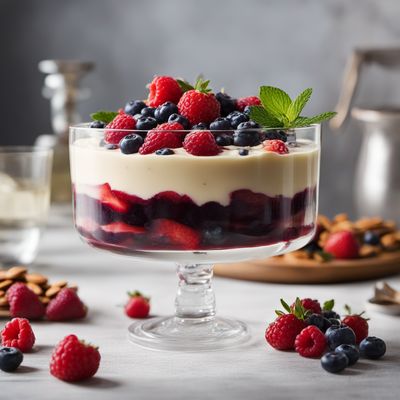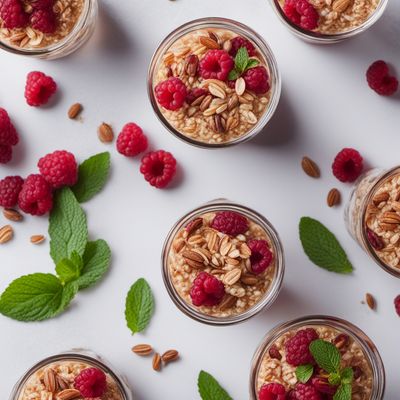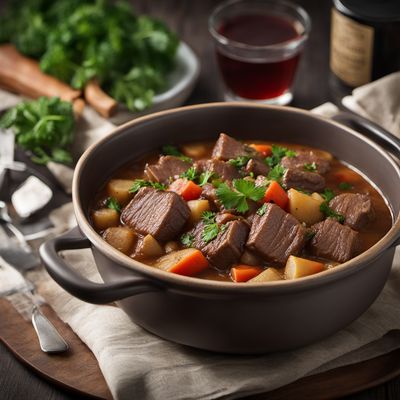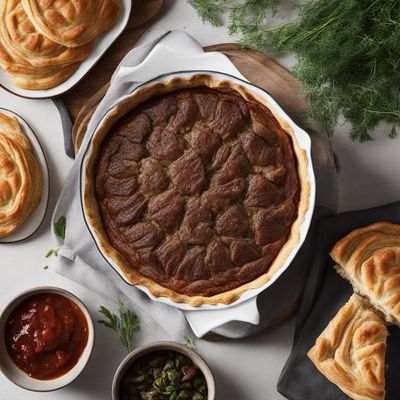
Recipe
Traditional Scottish Bannock
Hearty Scottish Bannock: A Taste of the Highlands
4.4 out of 5
Indulge in the rich flavors of Scottish cuisine with this traditional Scottish Bannock recipe. Bannock is a beloved Scottish bread that has been enjoyed for centuries, and it is a staple in Scottish households.
Metadata
Preparation time
15 minutes
Cooking time
20-25 minutes
Total time
35-40 minutes
Yields
6 servings
Preparation difficulty
Easy
Suitable for
Vegetarian, Nut-free, Soy-free, Egg-free, Peanut-free
Allergens
Wheat, Milk
Not suitable for
Gluten-free, Dairy-free, Vegan, Paleo, Keto
Ingredients
-
2 cups (250g) all-purpose flour 2 cups (250g) all-purpose flour
-
2 teaspoons baking powder 2 teaspoons baking powder
-
1/2 teaspoon salt 1/2 teaspoon salt
-
2 tablespoons (28g) unsalted butter, cold and cubed 2 tablespoons (28g) unsalted butter, cold and cubed
-
1/4 cup (50g) granulated sugar 1/4 cup (50g) granulated sugar
-
1/2 cup (120ml) milk 1/2 cup (120ml) milk
-
1/4 cup (60ml) buttermilk 1/4 cup (60ml) buttermilk
-
Optional: 1/4 cup (40g) currants or raisins for a traditional touch Optional: 1/4 cup (40g) currants or raisins for a traditional touch
Nutrition
- Calories (kcal / KJ): 220 kcal / 920 KJ
- Fat (total, saturated): 6g, 3.5g
- Carbohydrates (total, sugars): 37g, 10g
- Protein: 5g
- Fiber: 1g
- Salt: 0.5g
Preparation
-
1.Preheat the oven to 200°C (400°F) and line a baking sheet with parchment paper.
-
2.In a large mixing bowl, whisk together the flour, baking powder, and salt.
-
3.Add the cold butter to the flour mixture and use your fingertips or a pastry cutter to cut it into the flour until the mixture resembles coarse crumbs.
-
4.Stir in the granulated sugar and optional currants or raisins.
-
5.Make a well in the center of the mixture and pour in the milk and buttermilk. Stir until the dough comes together.
-
6.Turn the dough out onto a lightly floured surface and knead it gently for about a minute until it becomes smooth.
-
7.Shape the dough into a round disc, about 1 inch (2.5cm) thick.
-
8.Place the dough onto the prepared baking sheet and use a sharp knife to score a cross on the top.
-
9.Bake in the preheated oven for 20-25 minutes, or until the bannock is golden brown and sounds hollow when tapped on the bottom.
-
10.Remove from the oven and let it cool on a wire rack before slicing and serving.
Treat your ingredients with care...
- Butter — Make sure the butter is cold and cubed to achieve a flaky texture in the bannock.
- Buttermilk — If you don't have buttermilk, you can make a substitute by adding 1 tablespoon of lemon juice or vinegar to 1 cup of milk and letting it sit for 5 minutes before using.
- Currants or raisins — Adding currants or raisins is optional but traditional. If using, make sure to soak them in warm water for a few minutes before adding them to the dough to prevent them from drying out during baking.
Tips & Tricks
- For a savory twist, you can add grated cheese, herbs, or even cooked bacon to the dough before baking.
- Serve the bannock warm with a generous spread of butter or jam for a delightful treat.
- Leftover bannock can be toasted and enjoyed the next day for breakfast or as a snack.
- Experiment with different toppings such as honey, maple syrup, or Scottish marmalade to enhance the flavors.
- If you prefer a softer crust, you can brush the top of the bannock with melted butter as soon as it comes out of the oven.
Serving advice
Serve the Scottish Bannock warm or at room temperature. It can be enjoyed as a standalone bread or paired with soups, stews, or Scottish breakfast items like eggs, bacon, and black pudding.
Presentation advice
To present the bannock, slice it into wedges or squares and arrange them on a rustic wooden board or a traditional Scottish platter. Sprinkle some powdered sugar on top for an extra touch of elegance.
More recipes...
More Scottish cuisine dishes » Browse all

Heavy Cake
Heavy cake is a rich and decadent dessert that is perfect for special occasions. This cake is made with a variety of ingredients that come...

Tipsy Laird
Tipsy Laird is a traditional Scottish dessert that is perfect for any occasion. It is a delicious trifle made with whisky, raspberries, cream, and...

Stovies
Stovies is a classic Scottish dish that is made with potatoes and a variety of meats. The dish is hearty and flavorful, and is perfect for a cozy...






